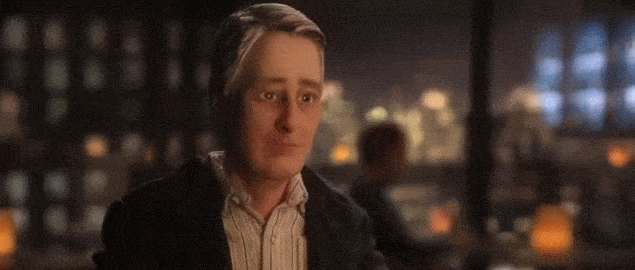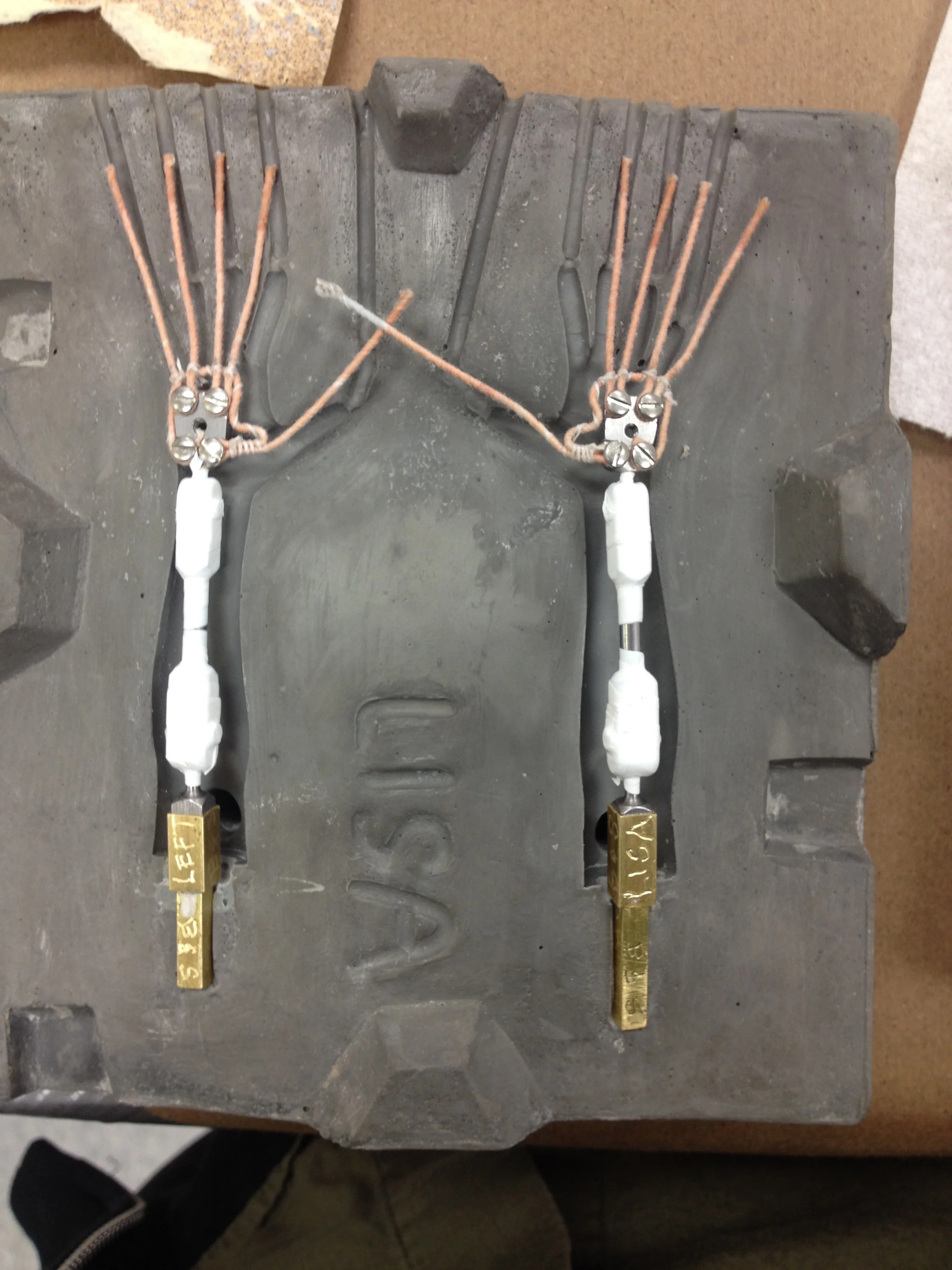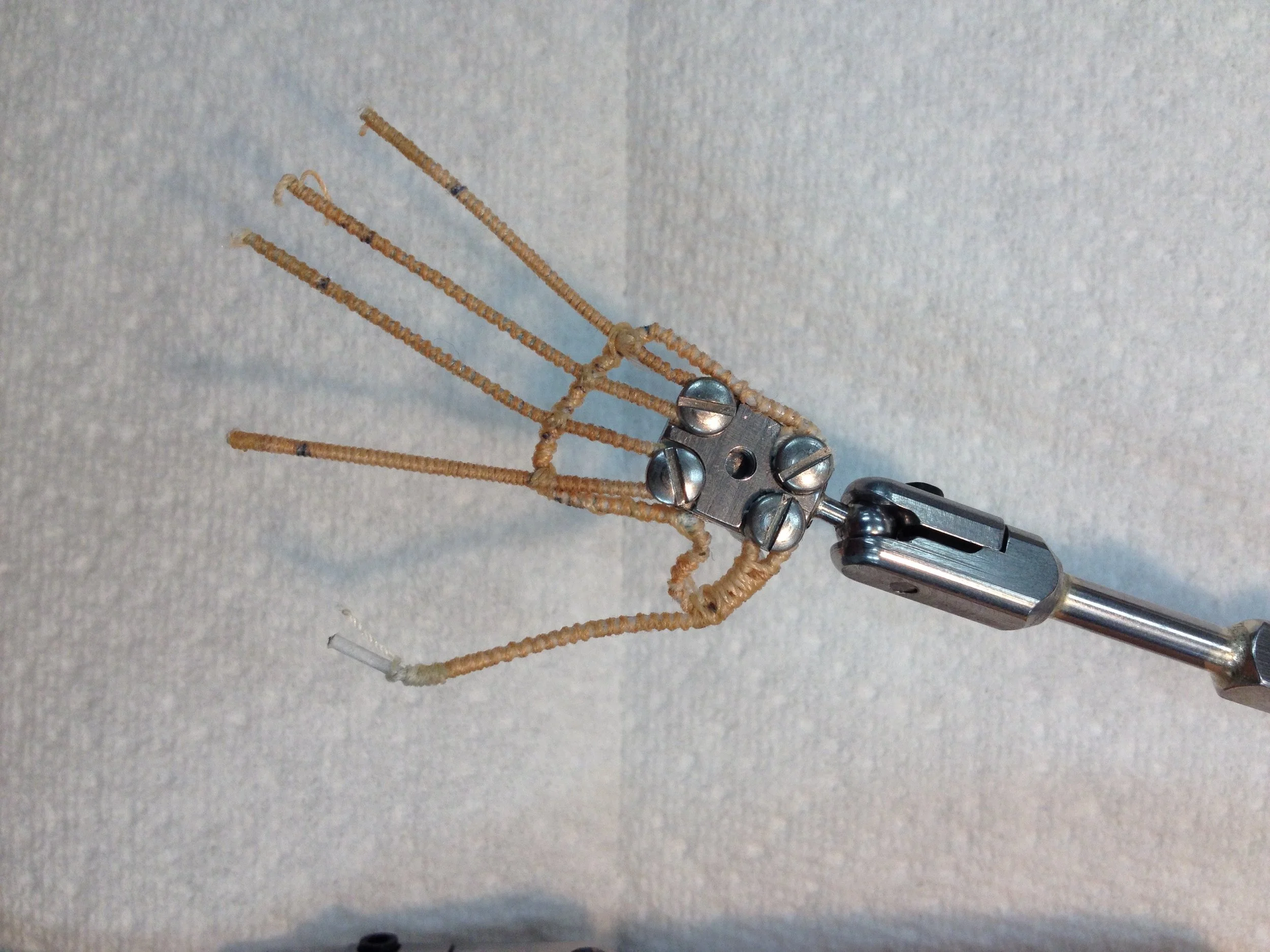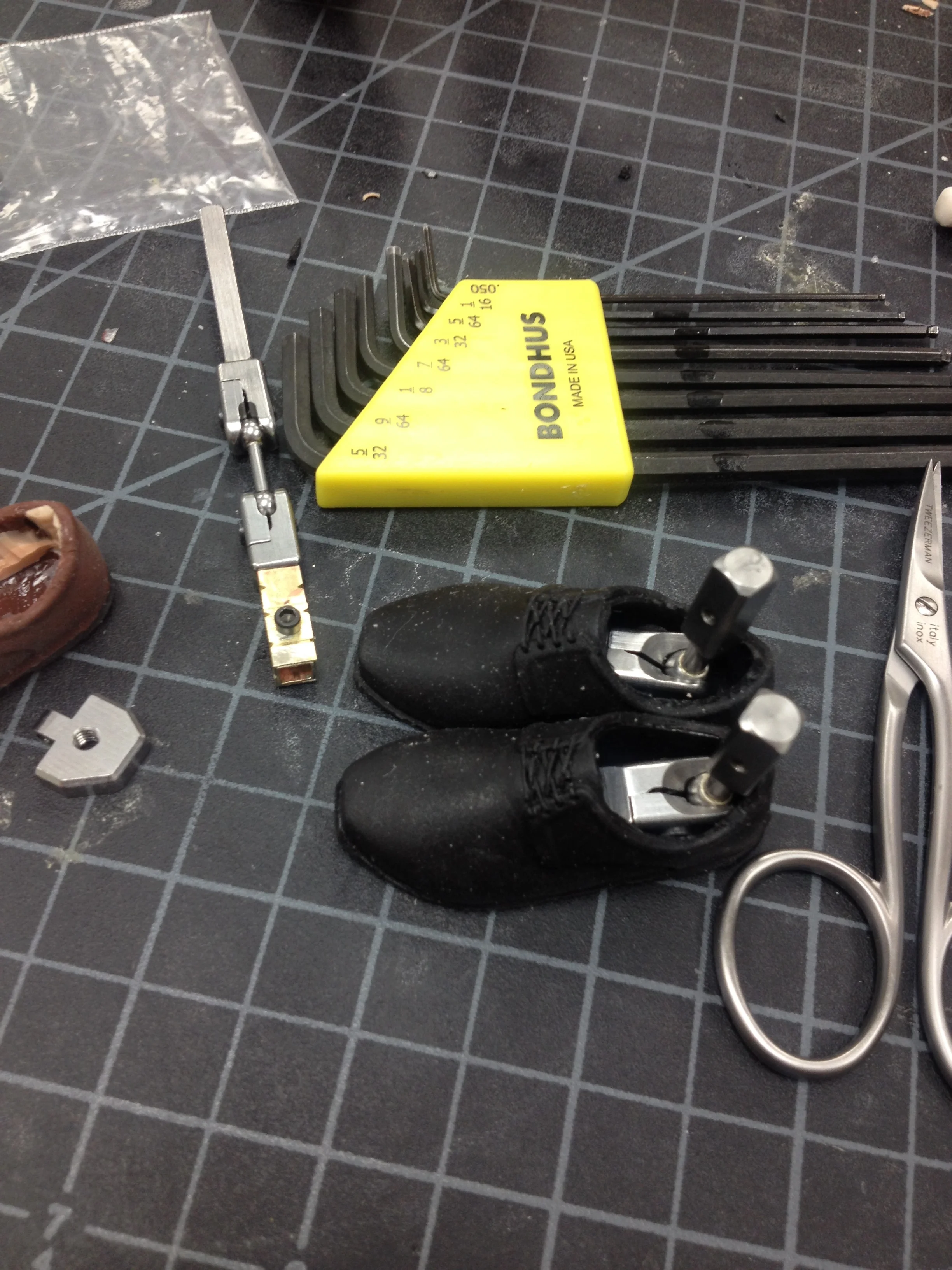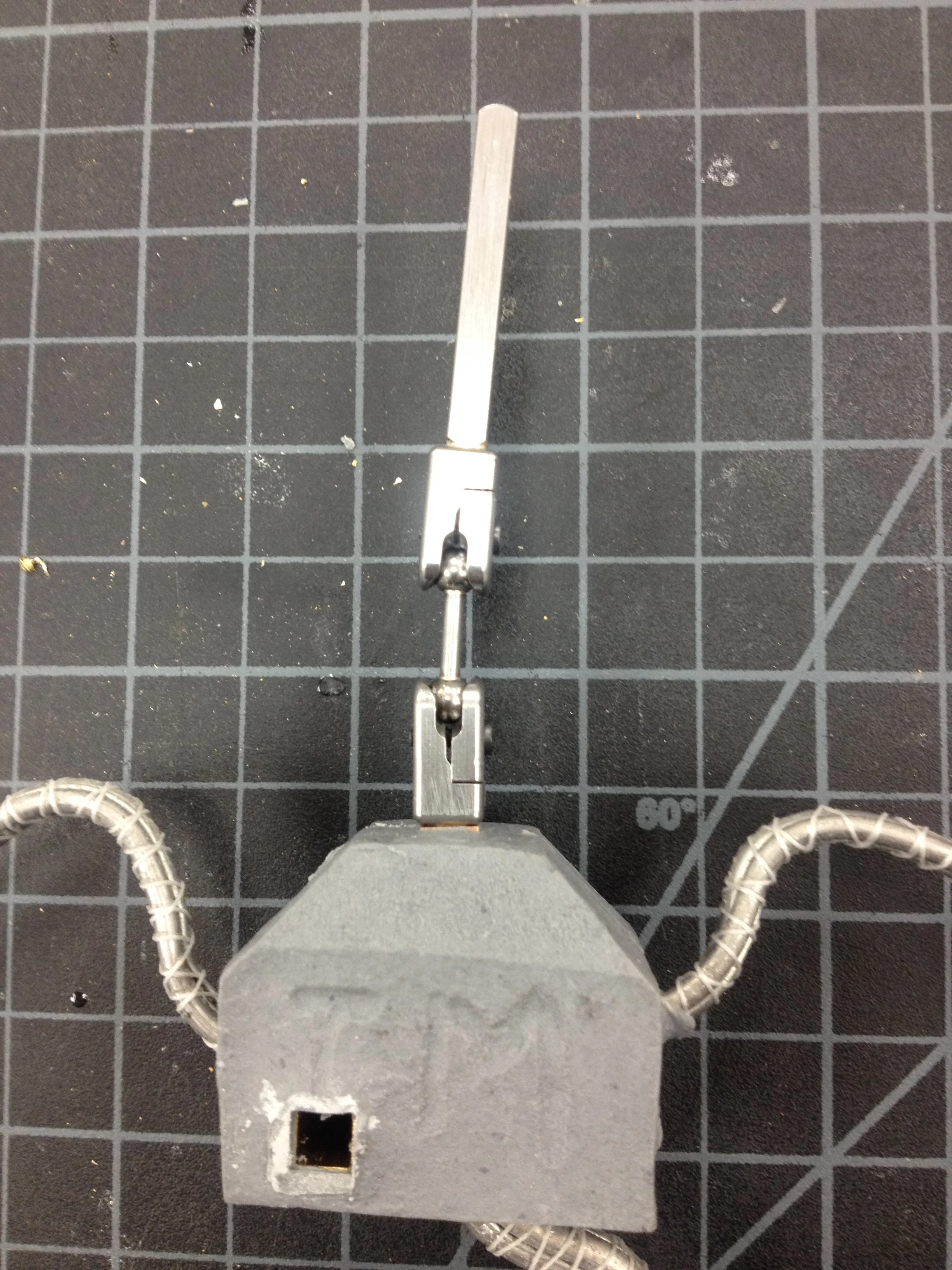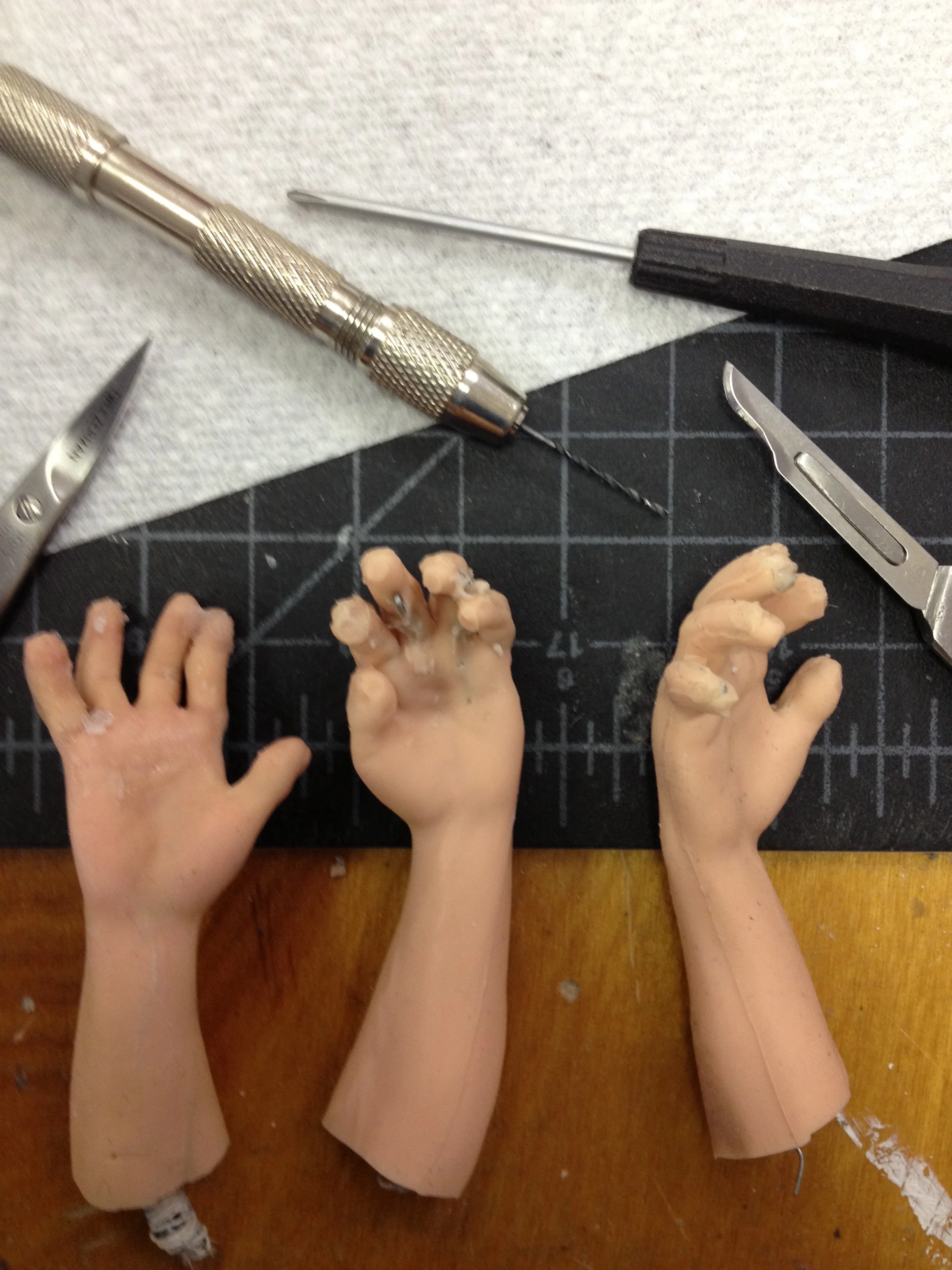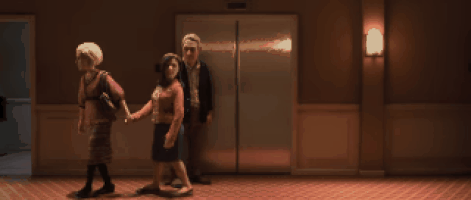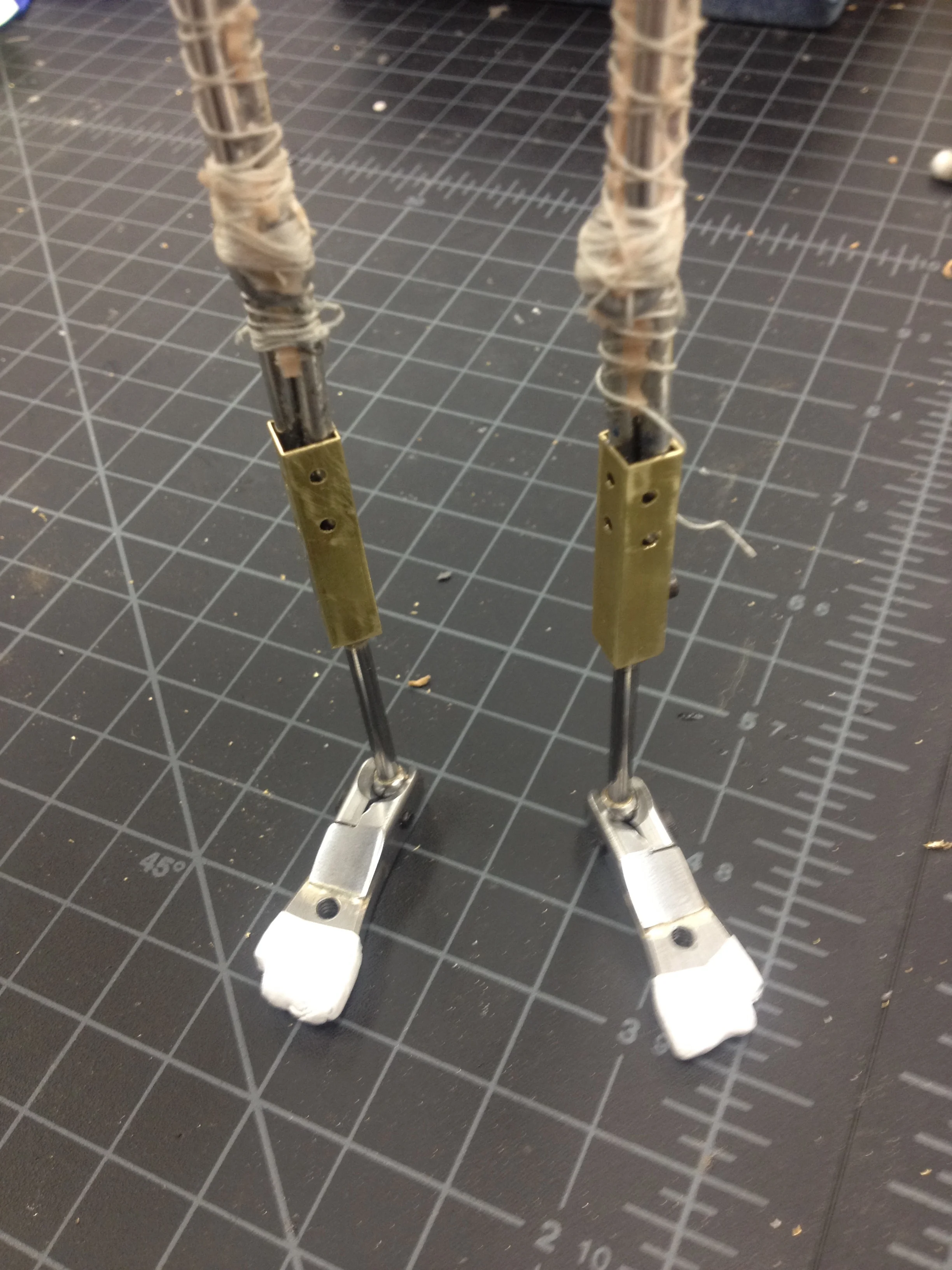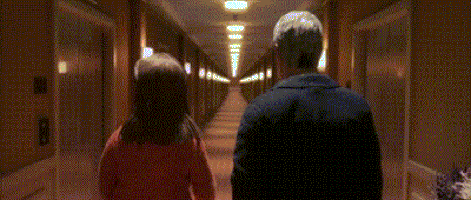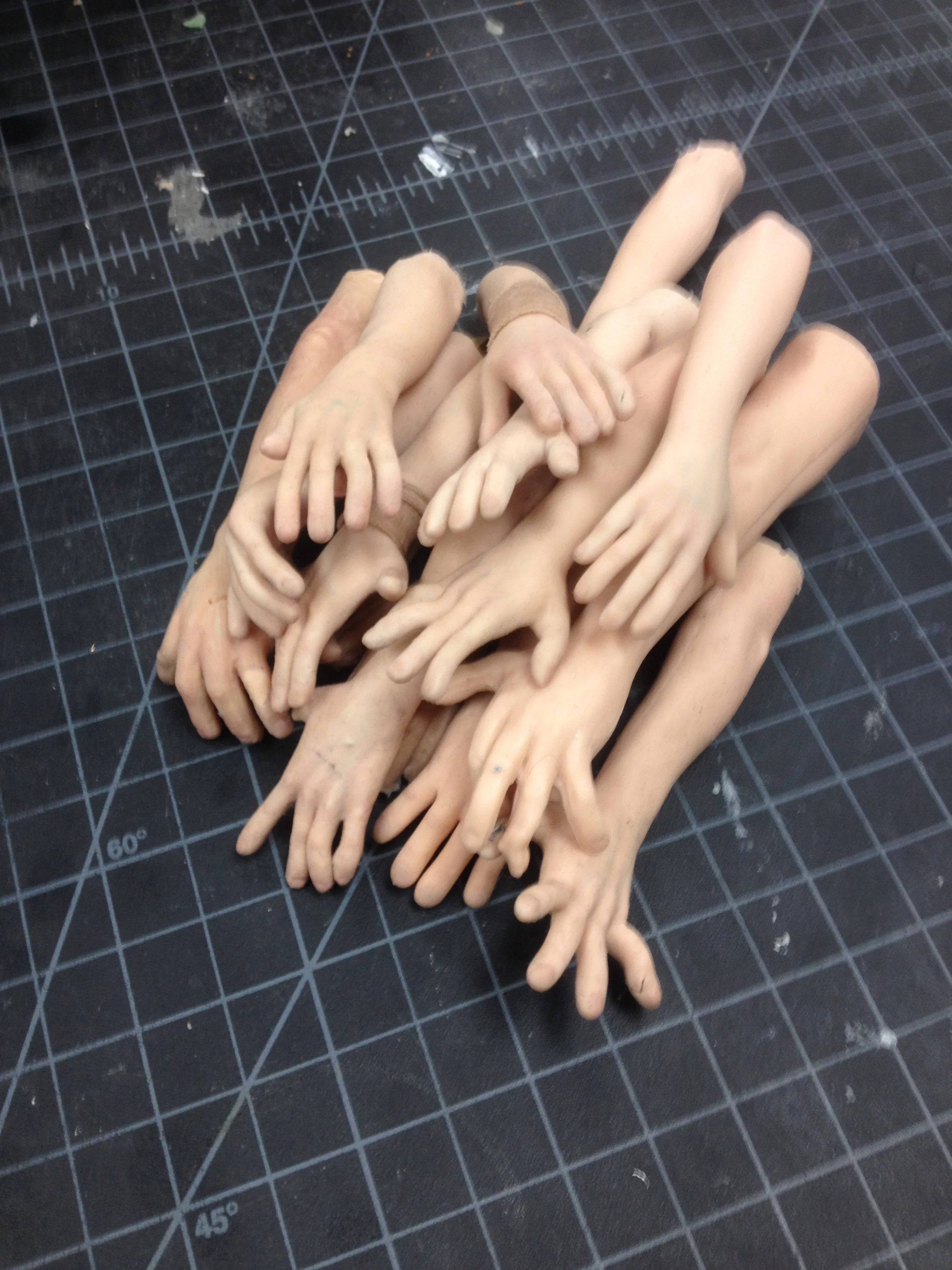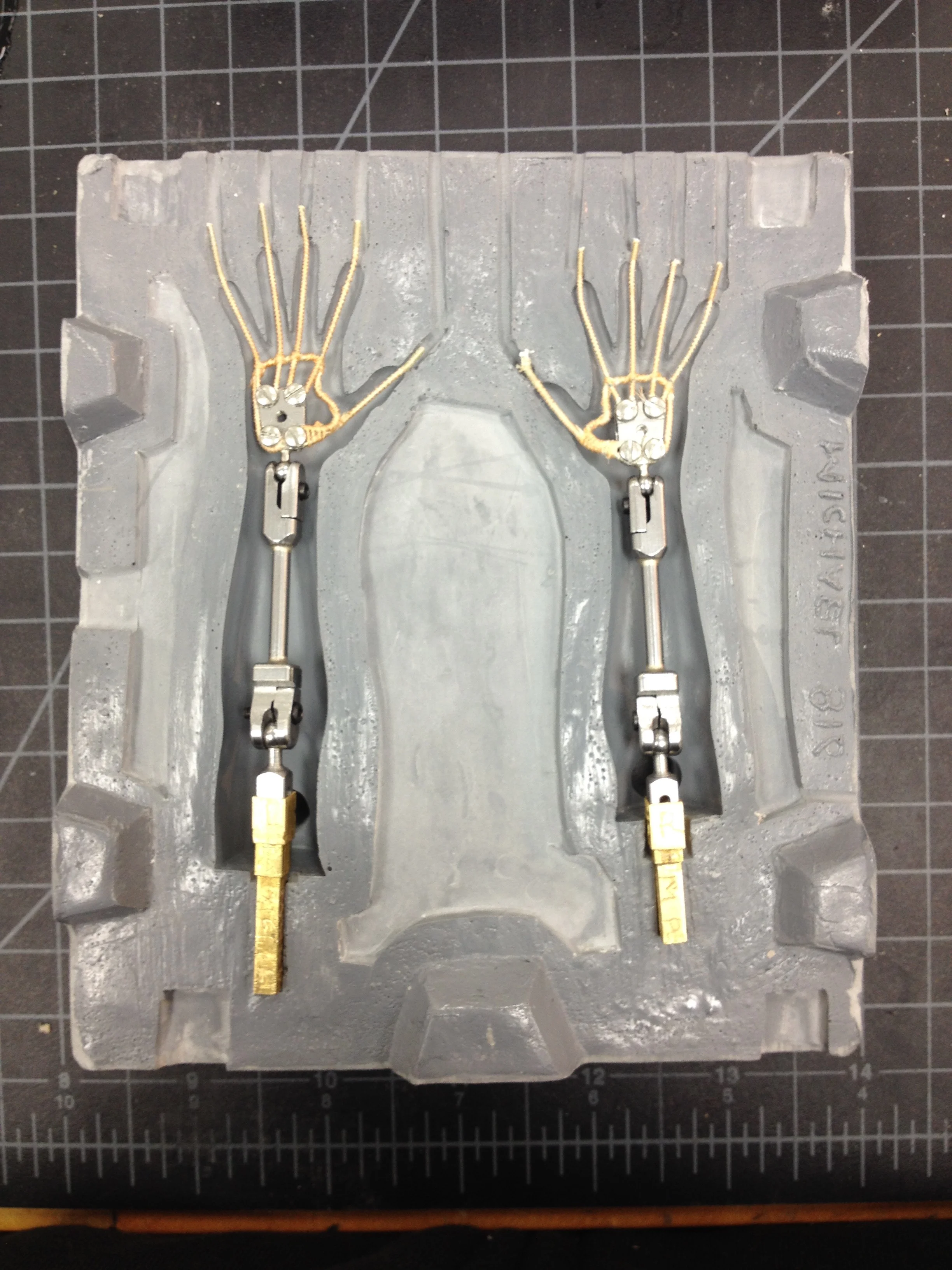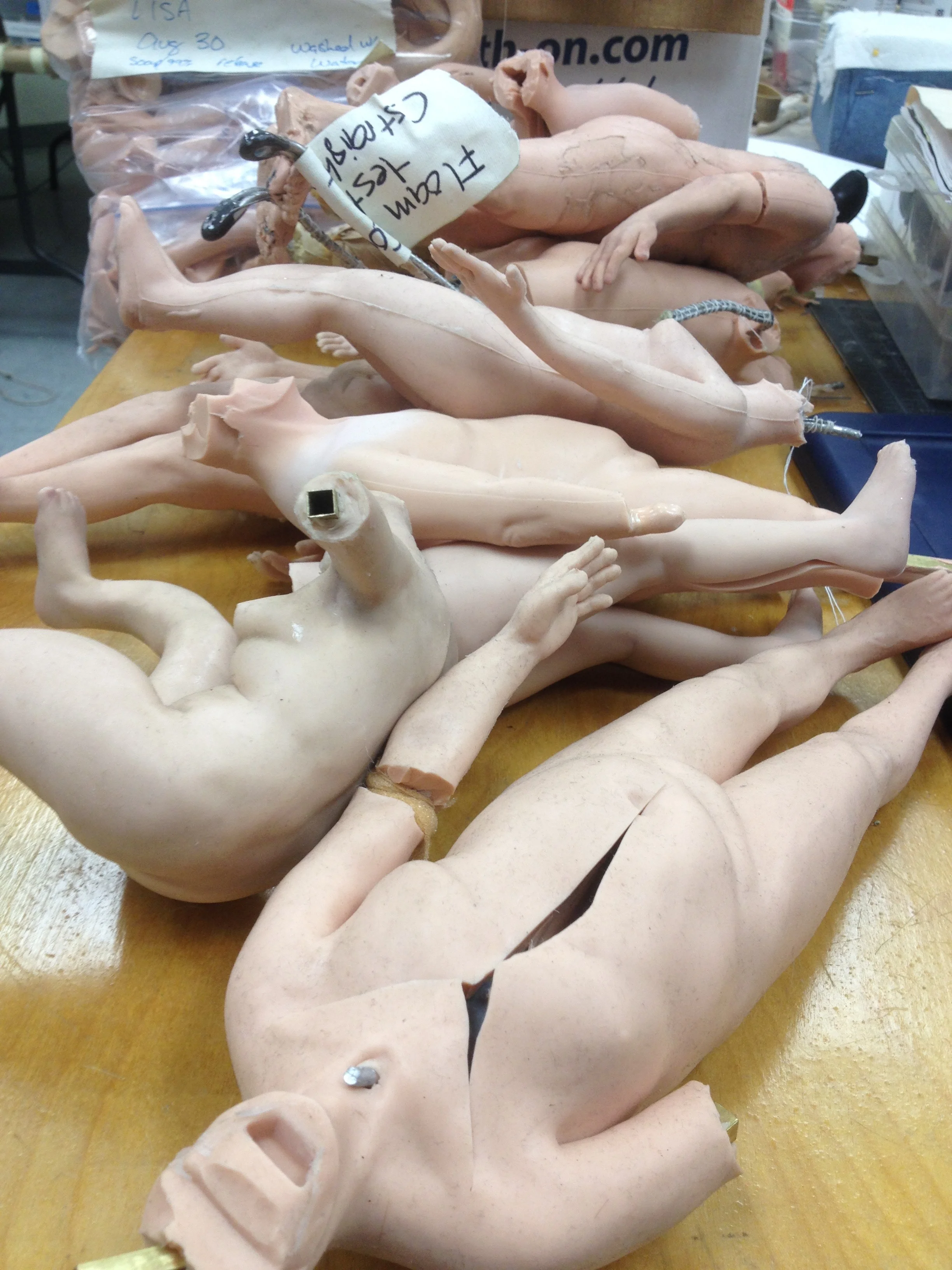Anomalisa
In 2013 I was hired to join the production of Charlie Kaufman's stop-motion masterpiece "Anomalisa". There was a cast of nearly one hundred puppets, all with unique hair, costume and size. Most of them were background characters, as there are really only two main characters of this film.
Originally those two main characters were constructed the same way as the "extras"; wire armature with an epoxy body block, brass stock sockets for replacing hands when broken and a 3-D printed "Headcore" that received the 2 halves of the faceplates used to give the characters their expressions and realistic phonetic mouth movements, frame by frame. When they found that this design was fine for the background characters with little action or screen time, it was beginning to cause near catastrophic problems on set for the main characters. Breakage of the composite wire systems were increasing and general fatigue was wearing down the strength of the wire based puppets.
Thats where I came in. The wire systems designs were not so much to blame, they work great and I still utilize that basic system for some simple puppets. However, when a puppet is having to perform for thousands of frames, with hamfisted animators moving them every which way to achieve their shot, the puppets quickly wear down and subtle nuanced movement becomes nearly impossible. If you've seen "Anomalisa" you'll understand what we were trying to achieve. We were not making a cartoon, we were making a film with photorealistic human puppets that inhabit our everyday world. The puppets required a softness, a seamless flesh and a breathing life.
To achieve this, I had special custom machined parts made to fit pre-existing puppet designs.
